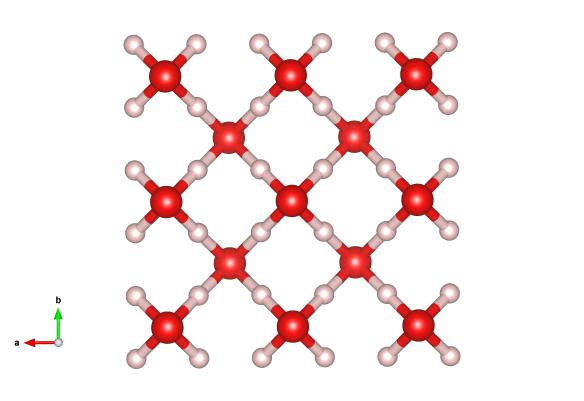Ice X – The extreme form of ice
What does it look like?

Image generated by the VESTA (Visualisation for Electronic and STructural analysis) software http://jp-minerals.org/vesta/en/
What is it?
So far this year we've had a few forms of ice, and they've all had something in common - the hydrogen bond, a connection between the hydrogen of one water molecule with the oxygen of another. But what happens when these atoms get so close that they form a bond like that between the atoms within the water molecule? Well what is thought to happen when Ice X is formed.
Ice X is the most extreme form of ice that we know about (so rather appropriately named). But given the conditions it's thought to form under it's one of the structures we know least about. If you compress a drop of water at room temperature it will solidify at about 1 GPa, which is the pressure of your average African elephant on a stiletto heel, to Ice VI. But to form Ice X, you need a lot more pressure – at least 60 GPa - before the hydrogen atoms are moved to the middle between the oxygen atoms.
Given that Ice X is also thought to be stable to very high temperatures (up to 2500 K so far) then it could be an important part of the interiors of the icy gas giant planets, like our very own Uranus and Neptune.
Where did the structure come from?
Ice X was first identified by two spectroscopy studies in 1984, and a later X-ray diffraction experiment gave clues to the centring of the hydrogen atom. But there are still a number of questions over whether or not the hydrogens atoms still move about like they do in many of the other ice structures.






